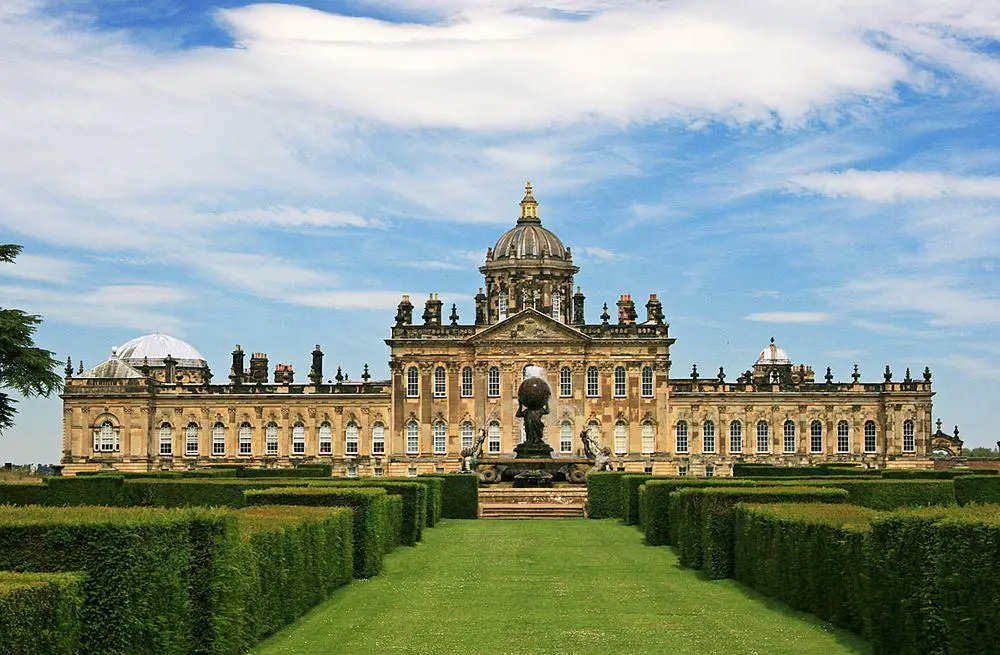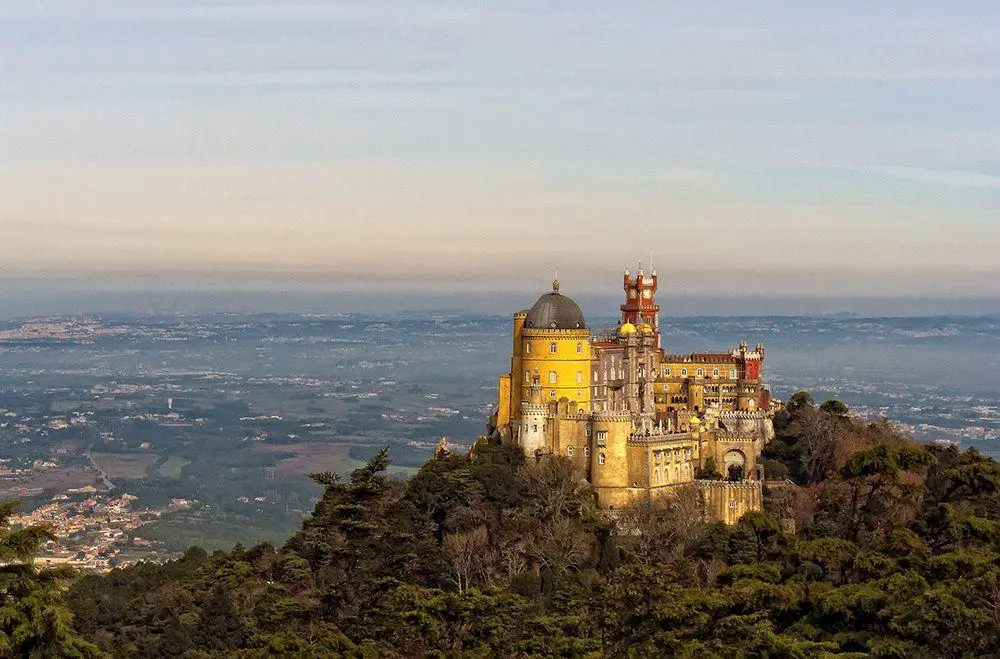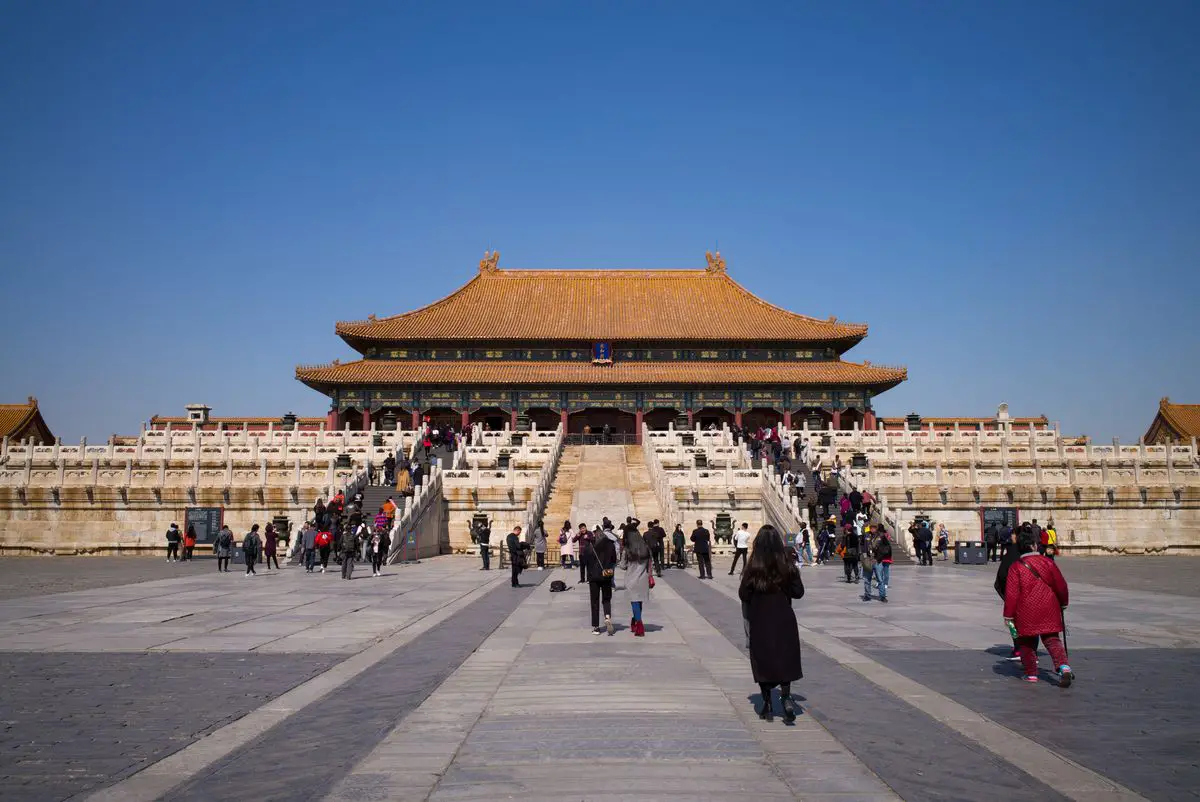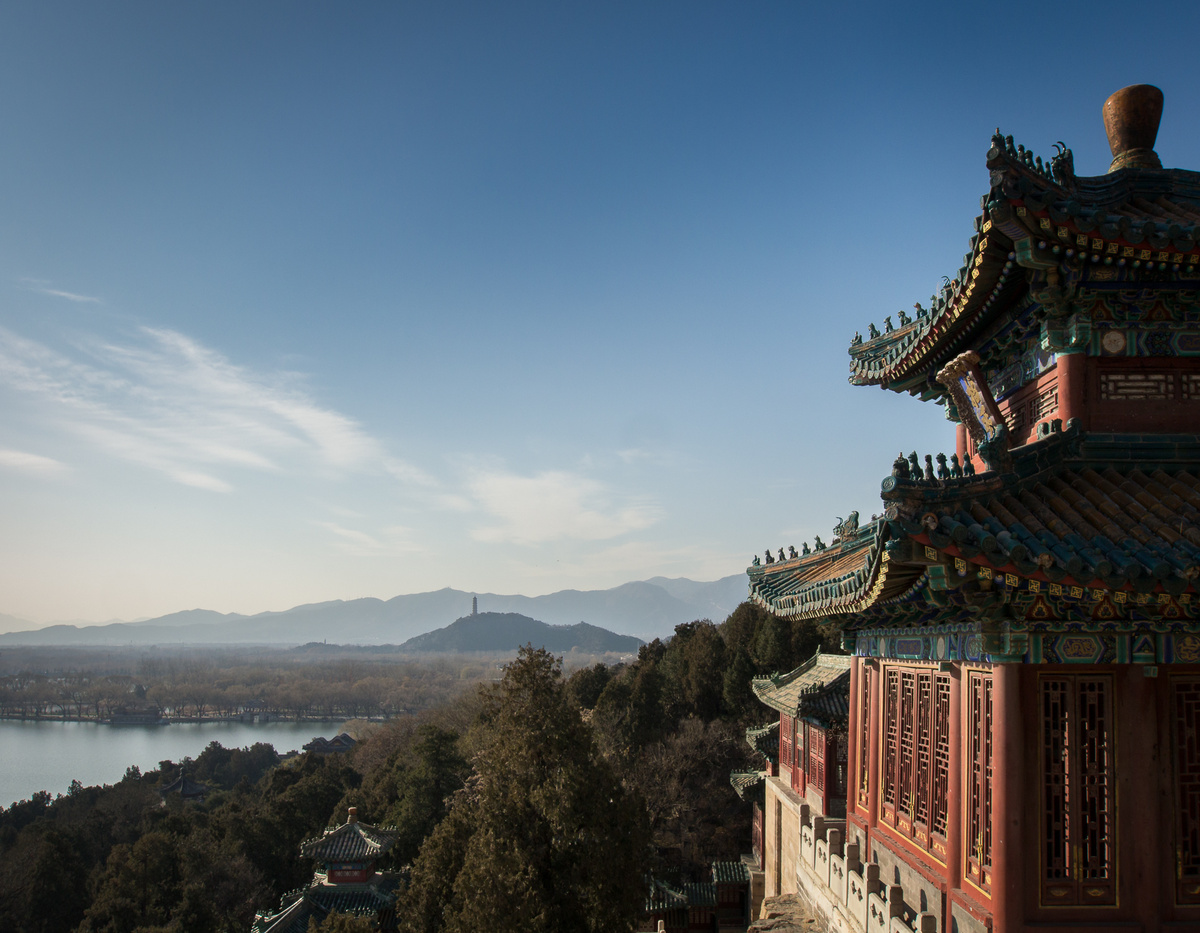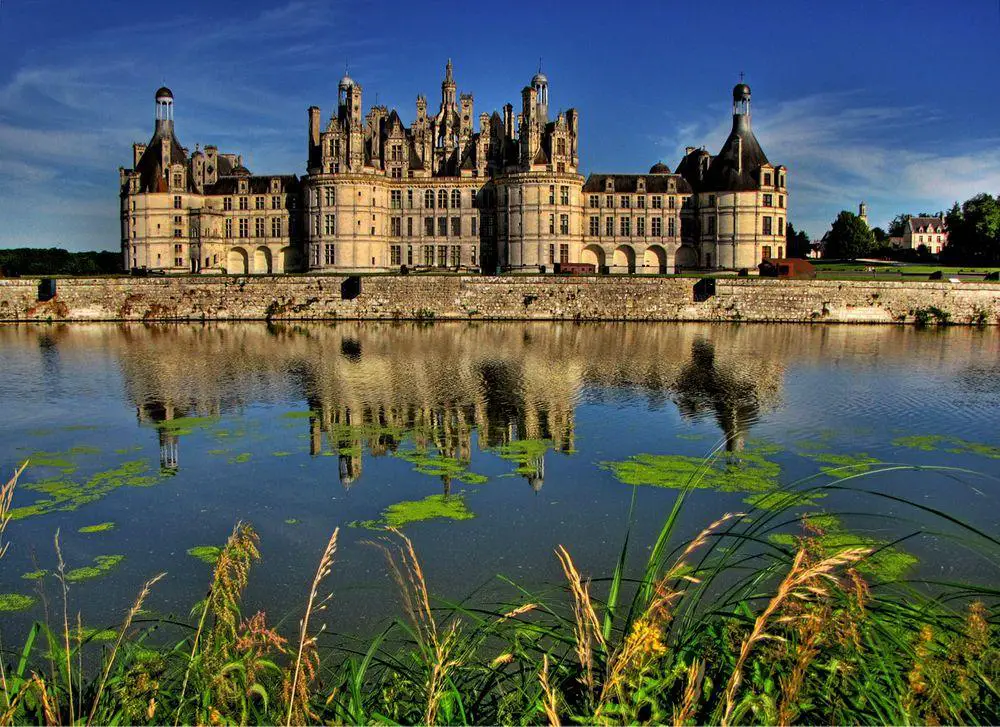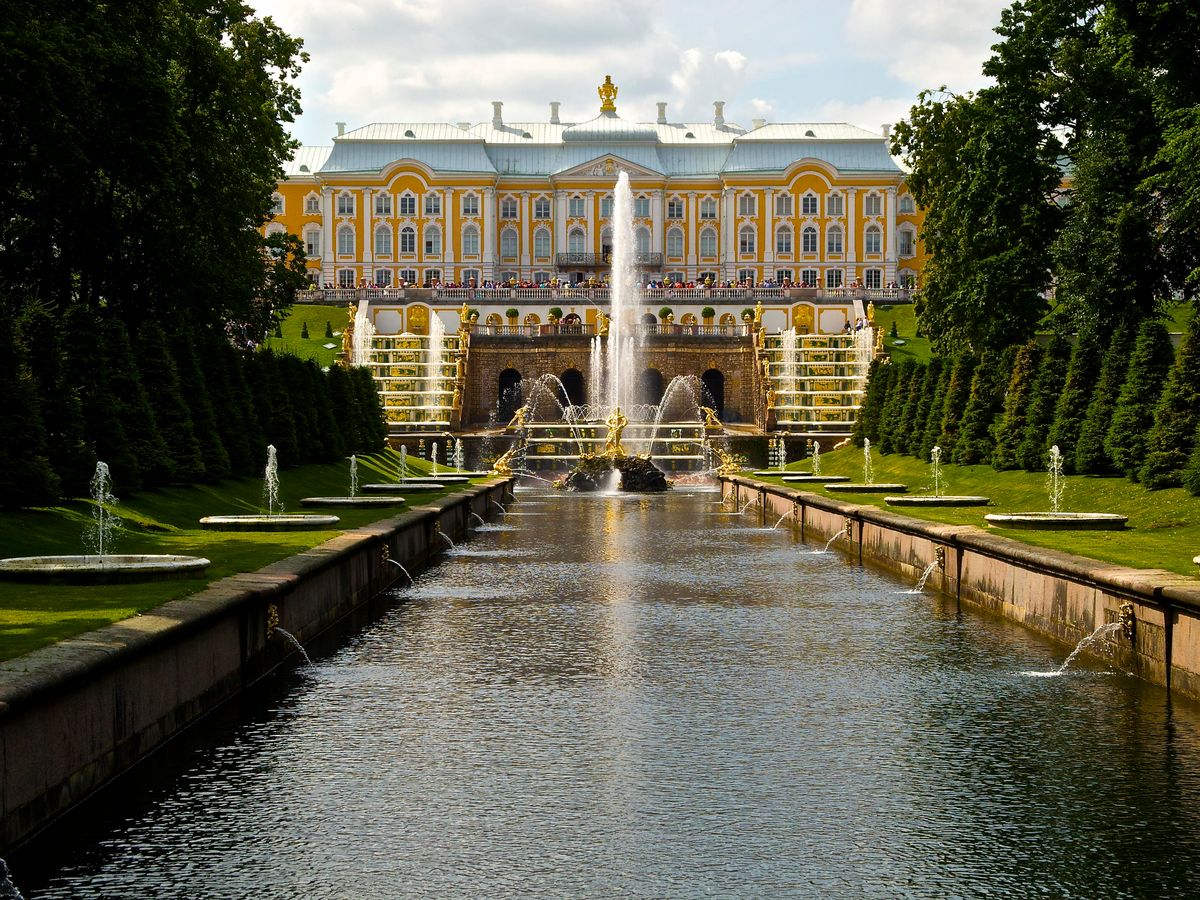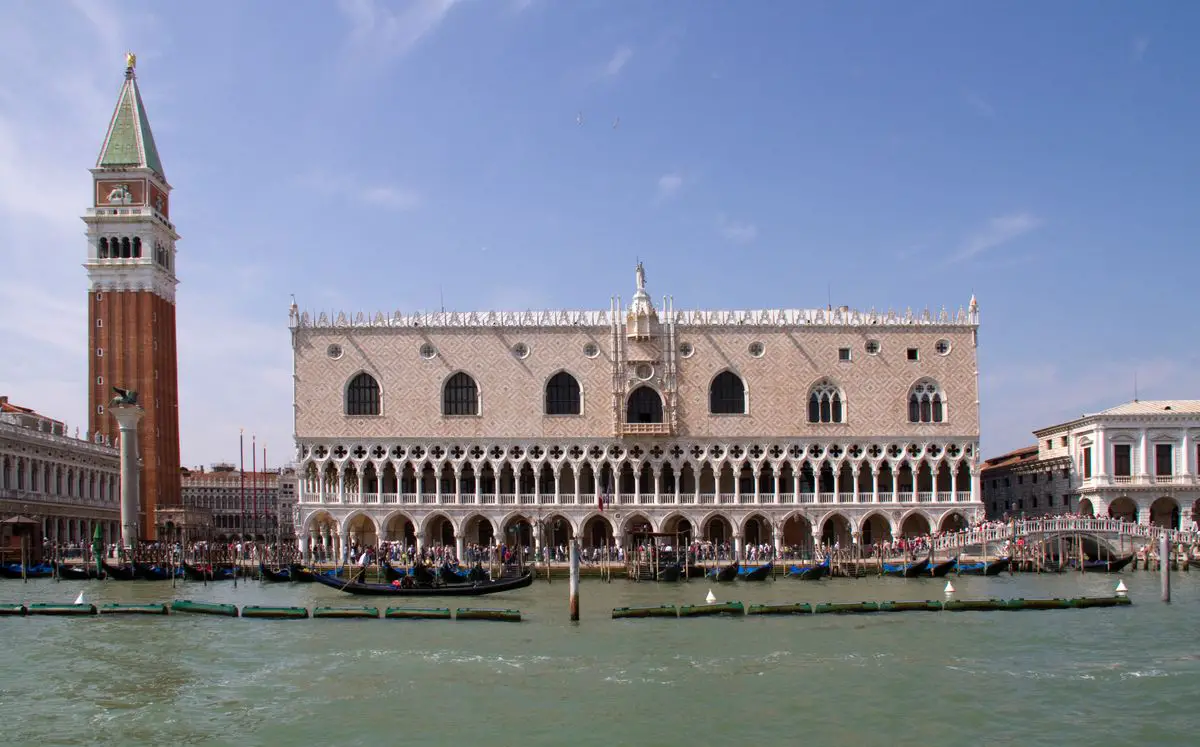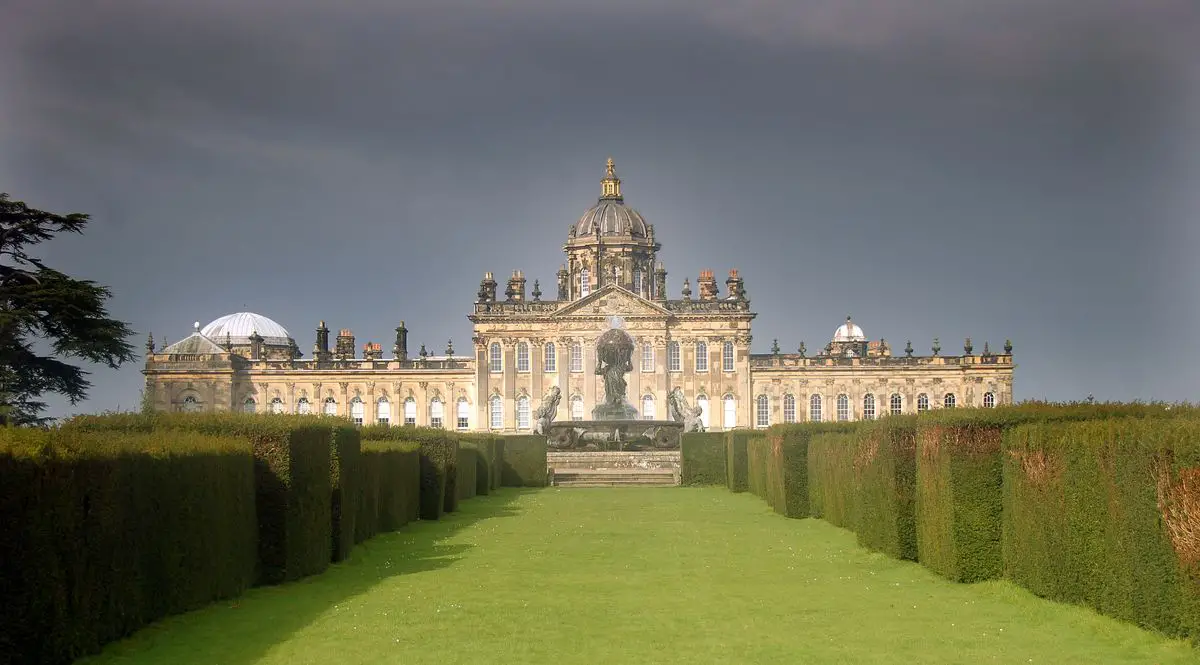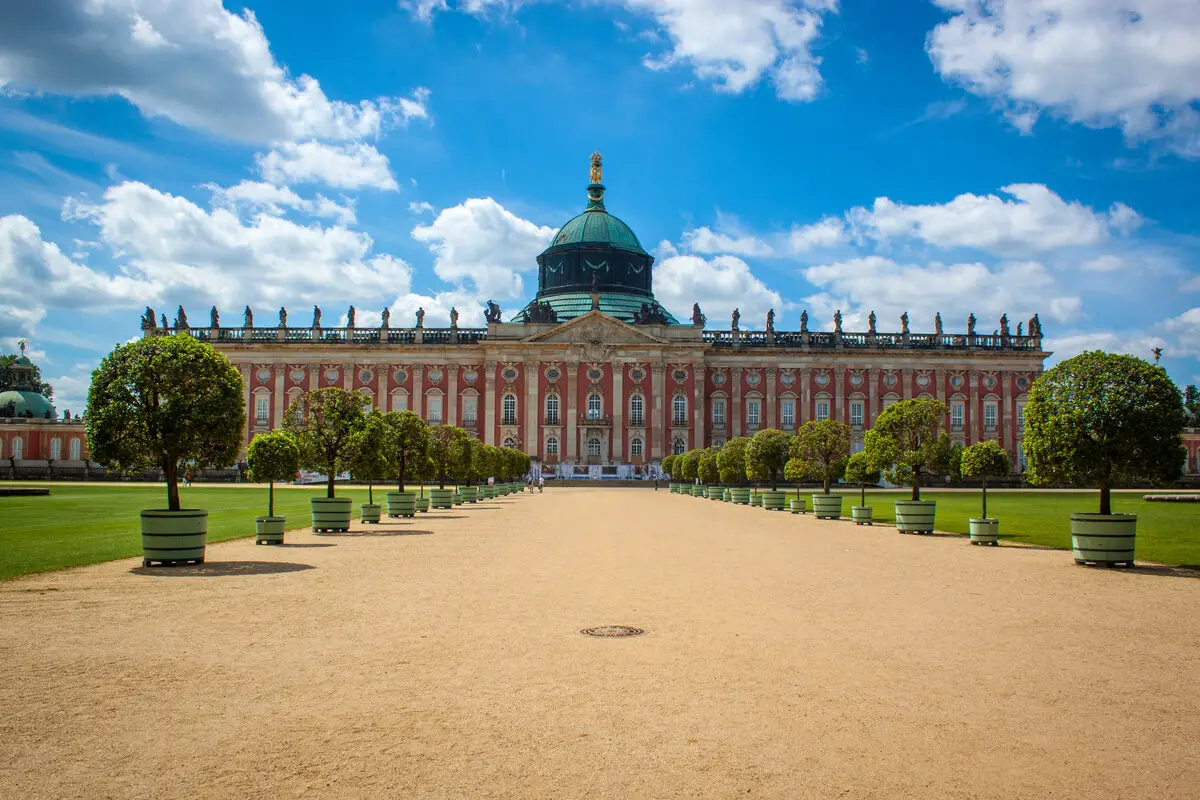Wondermondo 🢖 Categories of wonders 🢖 Architectural wonders 🢖 Houses 🢖 Palaces and country houses
Category
Palaces and country houses
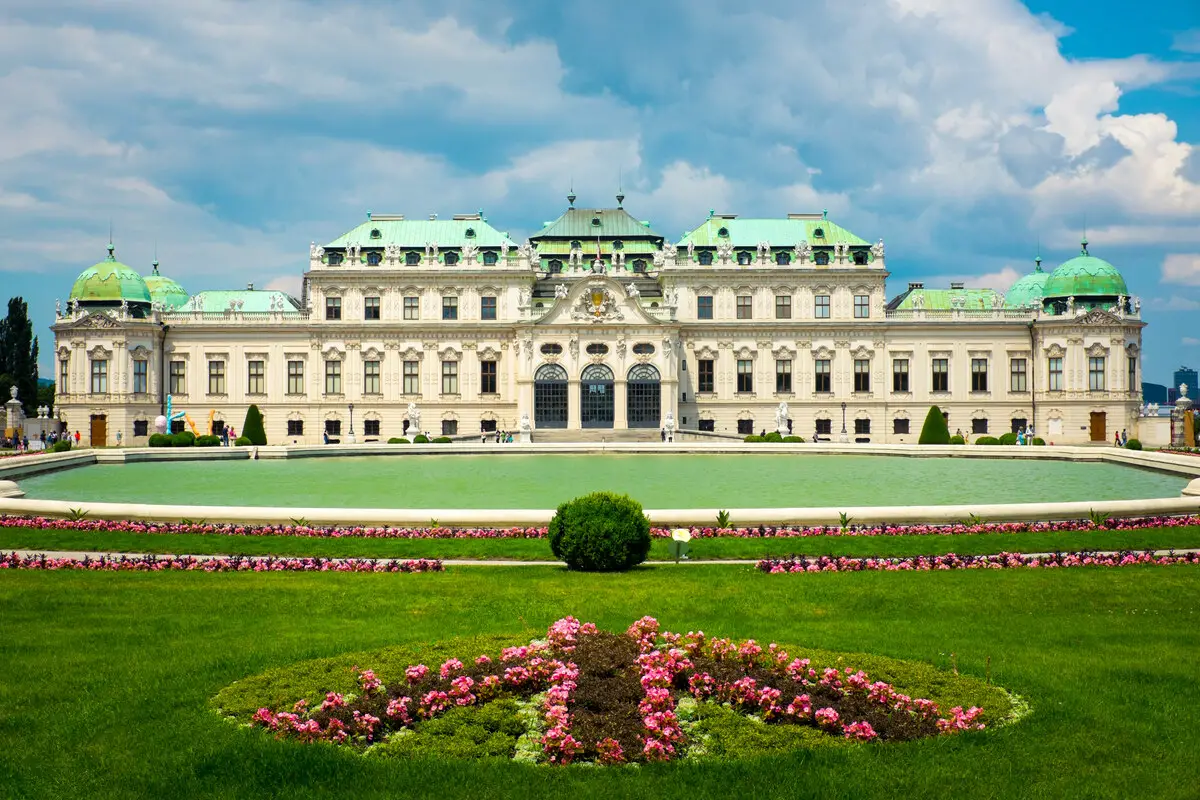
 Described palaces and country houses
Described palaces and country houses
If you see this after your page is loaded completely, leafletJS files are missing.
 What is included in this category?
What is included in this category?
Palaces are impressive residences of important and/or affluent persons.
Palaces were built since the beginning of the construction: large and showy residences always have served to express the power of their owners.
Characteristic features of palaces
- Large size. In order to excel, the palace should be larger than any other structure in the vicinity, at least larger than surrounding residential buildings.
- Ornate interior and exterior. Expensive materials, ornamentation, and works of art show the wealth and exquisite taste of the owner.
- Planning without significant fortifications. Palaces, in general, were built during periods of peace. The mere nature of a large building with numerous large windows has been a show of force: no one should dare to attack the powerful owner of the palace. Unfortunately, sooner or later tumultuous times came, influential people have influential enemies, and palaces often have been targets of attacks. Almost all the ancient palaces around the world have been lost.
- Open space around the building. Palace is secluded, it is away from the residences of common people. The area around it is shaped to excel and supplement the structure’s beauty.
The most impressive palaces are found throughout Western and Central Europe and at St. Petersburg in Russia, as well as in parts of Asia, especially in Japan, Korea, China, India, and Nepal.
Values
The main values of palaces are:
- The exterior of the palace building. Throughout the centuries the architecture of palaces has evolved but one does not change: owners of the palace have the freedom to select the design to their liking. And quite a few palace owners decide to build an extraordinary structure unlike anything else.
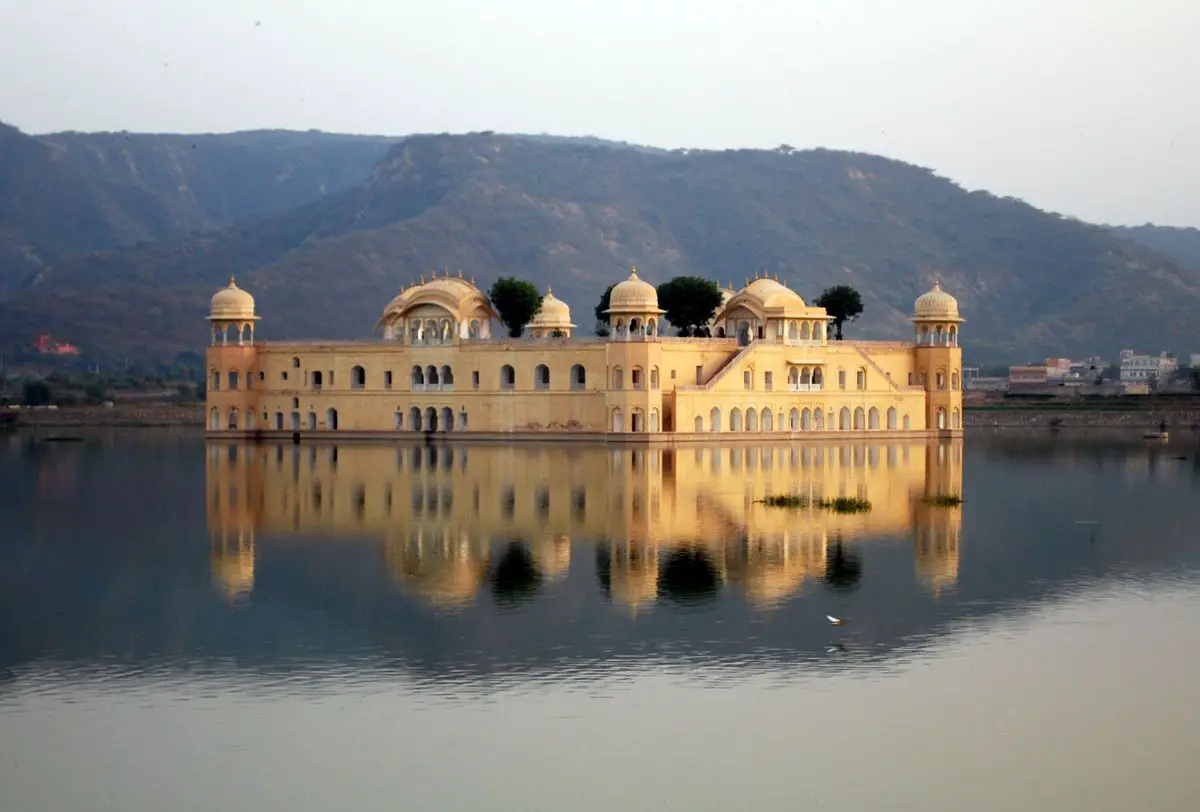
Jal Mahal, the Water Palace in Jaipur, India. / (WT-en) Ravikiran Rao, Wikimedia Commons / CC BY-SA 3.0 - The interior. The awe of the visitor does not end at the entrance door – the interiors of palaces often are a lot more impressive than the external view. Nevertheless, in many palaces, just a few main rooms have ornate interiors while most of the other rooms are fairly simple. Most of the palace owners could not afford to make ALL of the palace luxurious and, not all want to do this.
- Art collections and libraries. A large part of the world’s art values is located in palaces. Owners of palaces ordered paintings from the best painters in the world, and they collected rare books, and natural, and archaeological collections. Due to this many palaces are museums today.
- Parks and park architecture. Many of the world’s most beautiful parks are palace parks. Each true palace has its garden, often with beautiful causeways, bridges, and intricate systems of water streams and lakes. Many palaces have additional buildings in the parks and around the main building. The largest palaces have even smaller palaces elsewhere on the palace grounds.
Which buildings are palaces and which – are not?
It is not easy to tell the number of palaces around the world: there are no clear borders of this term. For example, in the United Kingdom, only royal residences and residences of bishops are called “palaces”, but there are numerous “country houses” and “halls” around the country that are no less impressive and are included in the category of palaces by Wondermondo.
Palaces and castles
Castles are fortified residences and belong to a different category. Nevertheless, there is no strict division between castles and palaces.
Many palaces are rebuilt castles: times of trouble pass, and the family persists and doesn’t want to live in a fortress anymore. Thus the castle is rebuilt, extended, and the fortification walls are removed.
Sometimes palaces are intentionally built similar to castles: these are not real fortifications but their owners wanted them to be similar to ones. One of the most prominent examples of such buildings is Pena Palace in Portugal.
Palaces as administrative buildings and cultural venues
Many palaces have served as administrative buildings: these large buildings often are not just residences of important authorities but have served as places for gatherings and decision-making.
This has turned into a tradition and today many purely administrative buildings and cultural venues are called “palaces”. Wondermondo does not include these structures in the category of “palaces”.
Palaces and villas
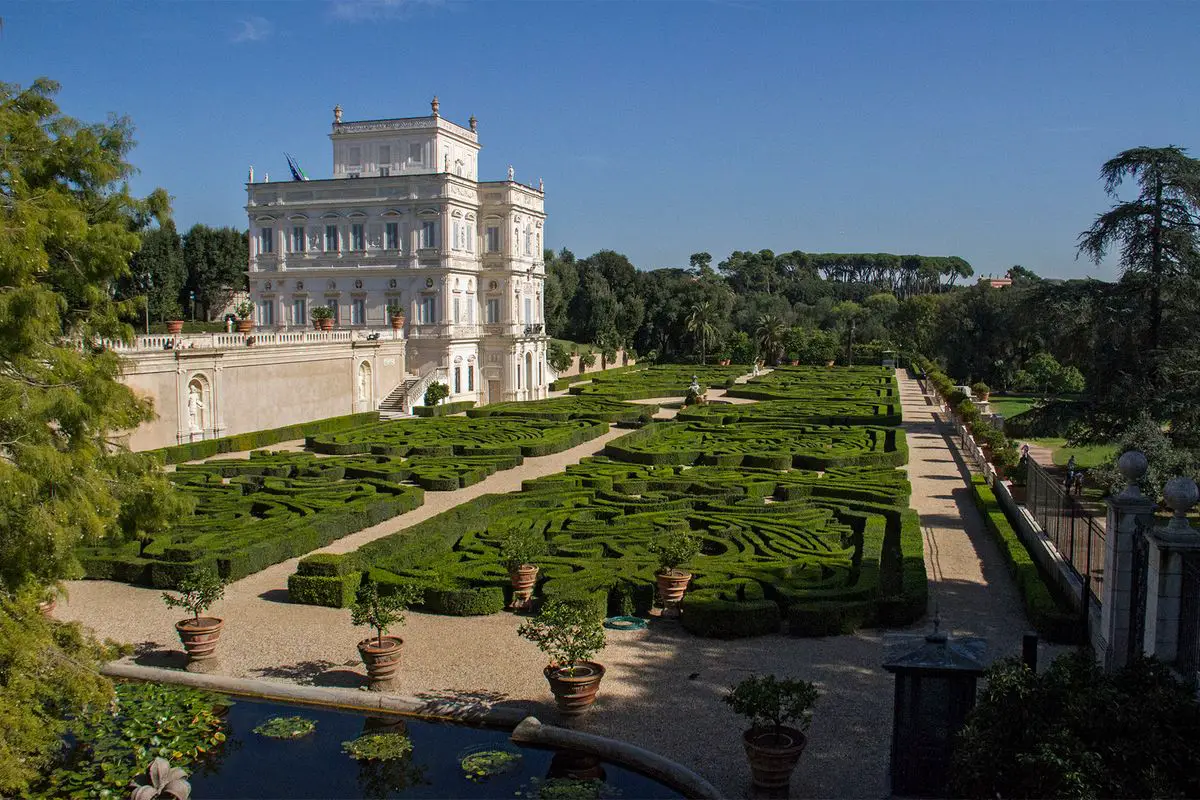
Villas are upper-class residences that are not as large and impressive as palaces. Villas are more secluded than palaces: if a palace is meant for show-off, a villa is a place for a family retreat from the public.
Nevertheless, the division between the palace and the villa is vague. For example, Villa Doria Pamphilj (Rome, Italy) is rather a palace – a large, ornate structure with extensive gardens around it.
Manor houses
Manor houses are residences of large landholders. The largest manor houses, such as Hatfield House, belong to the best palaces, but the smallest manor houses are similar to the houses of common citizens. Thus: not all manor houses are included in the category of palaces.
British townhouses, French palais, and Italian palazzos
Magnificent private residences in cities are comparable to palaces. Nevertheless, in the cities, there are fewer possibilities to develop a free-standing structure with a park and supplementary buildings around it. Thus, in most cases, these “city palaces” are not included in the category of true palaces.
Some records of palaces
- The oldest known palace in the world could the Sumerian Palace of Kish (Babil Governorate in Iraq). Its age is not known but it is possible that the palace existed already around 3500 BC.
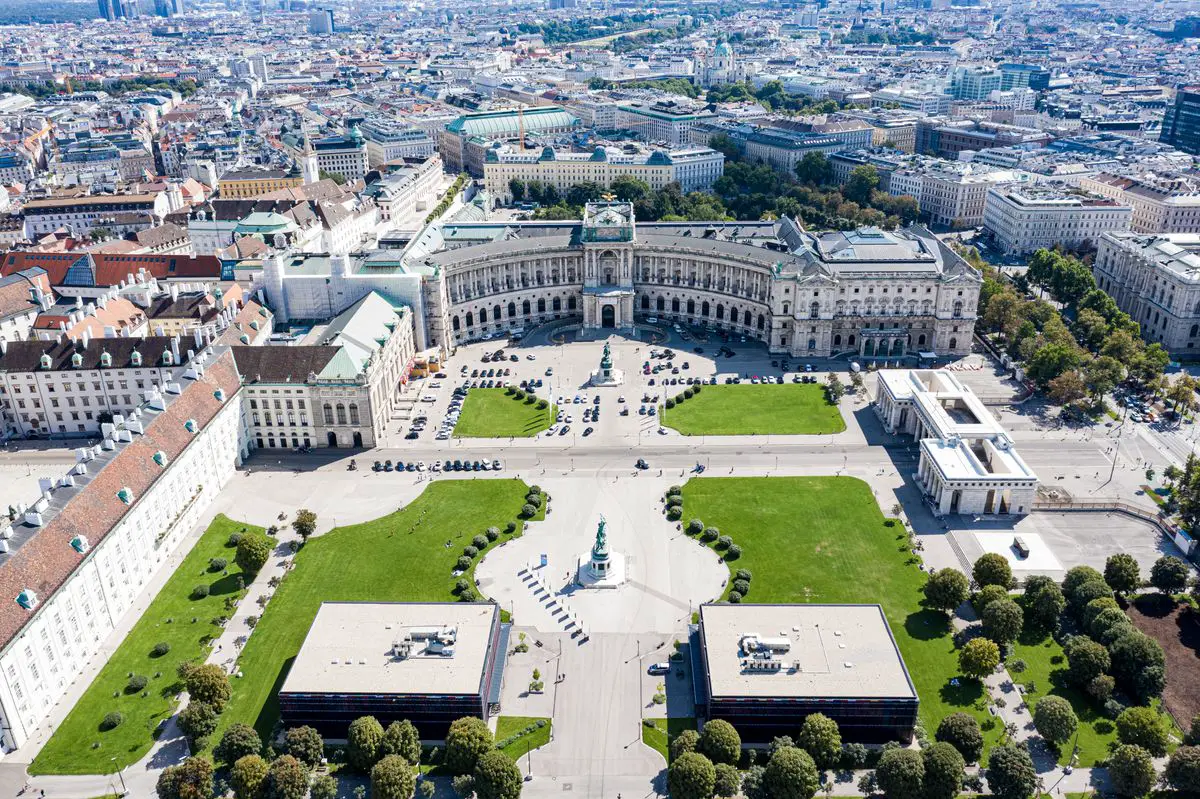
Hofburg Palace in Vienna. / Kasa Fue, Wikimedia Commons / CC BY-SA 4.0 - The largest palace in the world is Hofburg Palace in the center of Vienna, Austria. This giant structure has a floor area of 240 000 m2 and 2 600 rooms. The palace of the Parliament in Bucharest, Romania is larger but this is not a true palace.
- The largest palace grounds are located in Forbidden City, Beijing (China). This palace complex is 72,8 ha large and contains 980 buildings with 9 999 rooms. Among these 980 buildings, 90 buildings can be considered to be palaces – 90 palaces together!
- The largest palace complex ever built was Weiyang Palace in Xi’an (Shaanxi, China). It has an area of 480 ha and was constructed around 200 BC. This palace complex was eliminated by fire.
- The largest palace by the volume of its rooms could be the Royal Palace of Caserta (Campania, Italy). Its volume exceeds 2 million cubic meters, the palace has some 1 200 rooms and a floor area of 61 000 m2.
- The largest palace by the number of rooms could be the Royal Palace of Madrid. It has 3 418 rooms and a floor area of 135 000 m2. This giant palace is not just a large structure, but it has ornate interiors with immense values of art.
 Top 25 palaces and country houses
Top 25 palaces and country houses
Asia
Potala Palace
Tibet
A monument of world importance, this is the chief residence of the Dalai Lama. The first palace was built here in 637, while the current palace was built in 1645 at 13 floors and 117 meters high. It contains 1000 rooms and numerous monuments of art and knowledge, although most of them have been lost since the Chinese invasion.
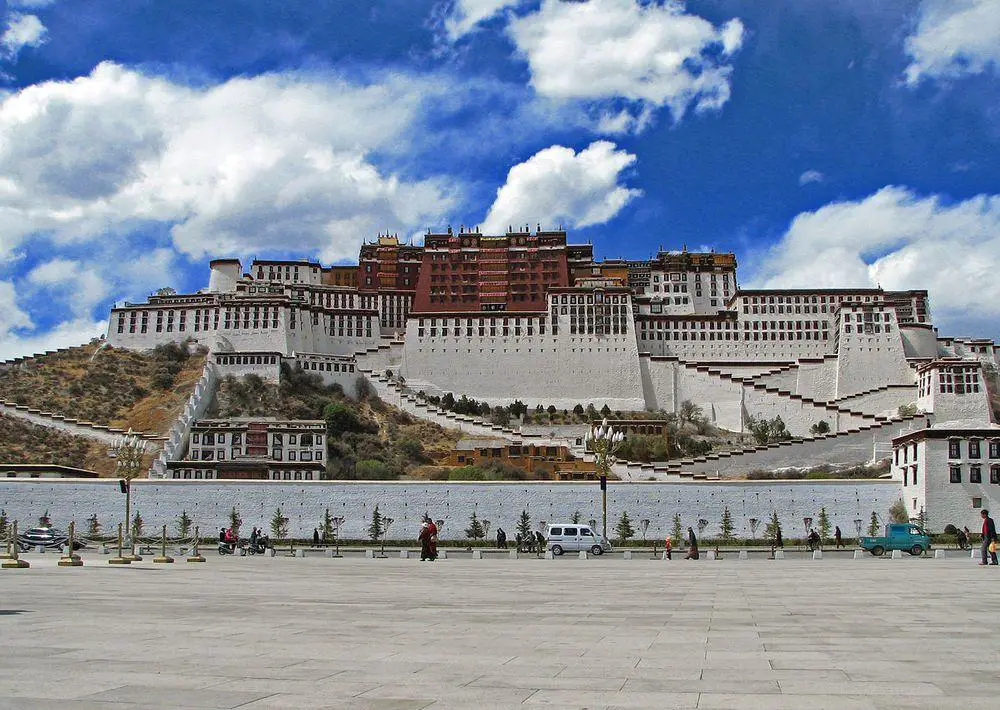
Forbidden City
China
World’s largest palace complex – the Chinese imperial palace that takes up a sizeable part of the city. This complex of buildings of some 500 years was the center of the Empire of China. Constructed in 1406 – 1420, includes 980 buildings with 9 999 rooms. Contains art collections of very high importance.
Gyeongbokgung
South Korea
This royal palace complex was first built in 1395 and rebuilt in 1867 when 330 buildings with 5,792 rooms were constructed. One of the symbols of Korea. Currently, the complex is undergoing reconstruction.
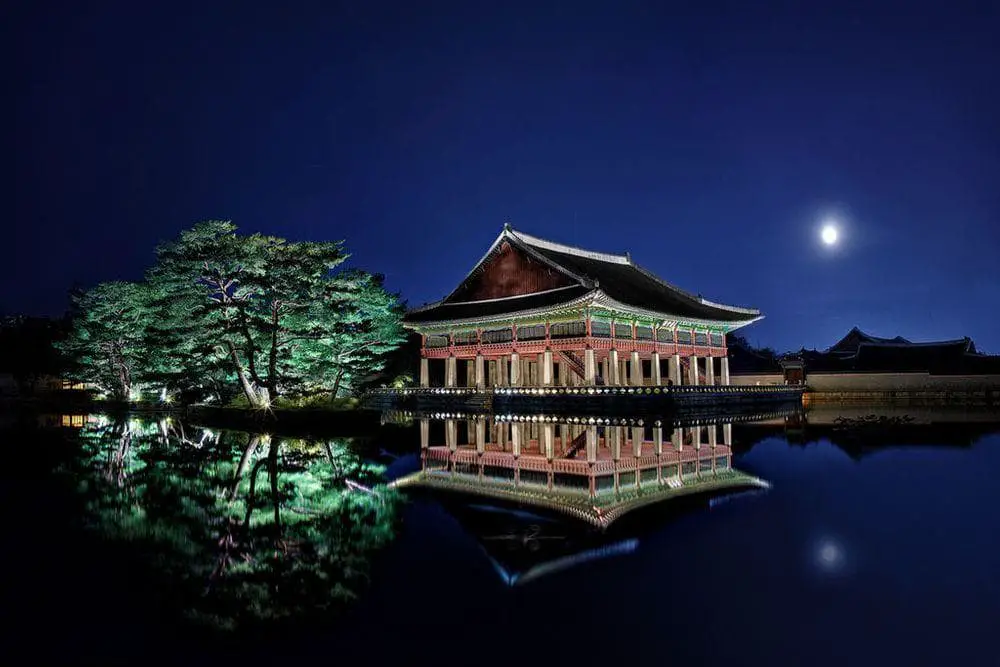
Summer Palace (Beijing)
China
A masterpiece of Chinese landscape garden design – a hilly forest park at the lake. Its development started in 1750 AD, the complex includes numerous buildings – temples, palaces, and garden architecture.
Lake Palace in Udaipur
India
A palace on Lake Pichola, the palace of the Mewar royal dynasty. This enormous palace was constructed in 1743 – 1746 as a summer palace. Now, this is a gorgeous luxury hotel.
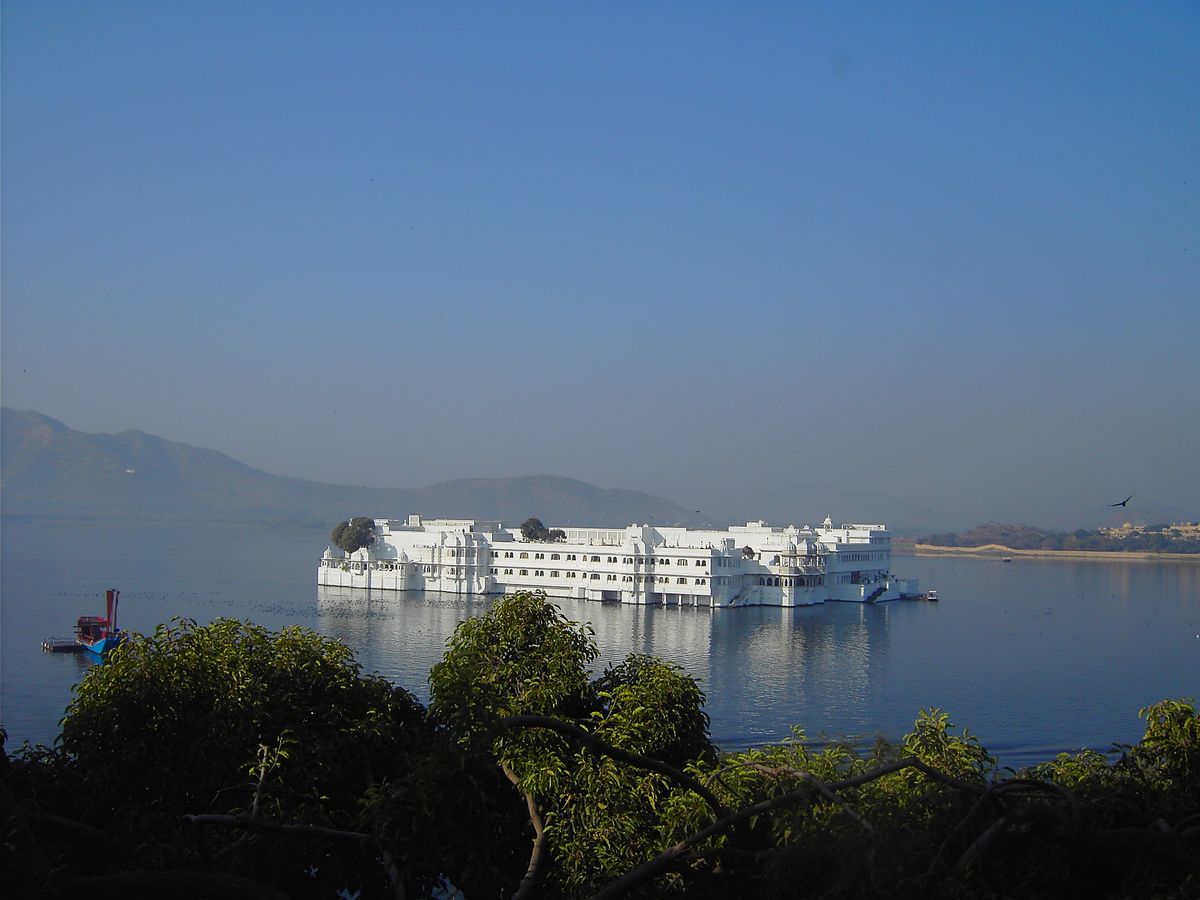
Hawa Mahal (Palace of Winds)
India
Palace with unusual architecture, built in 1799. Resembles an enormous beehive with 953 small windows.
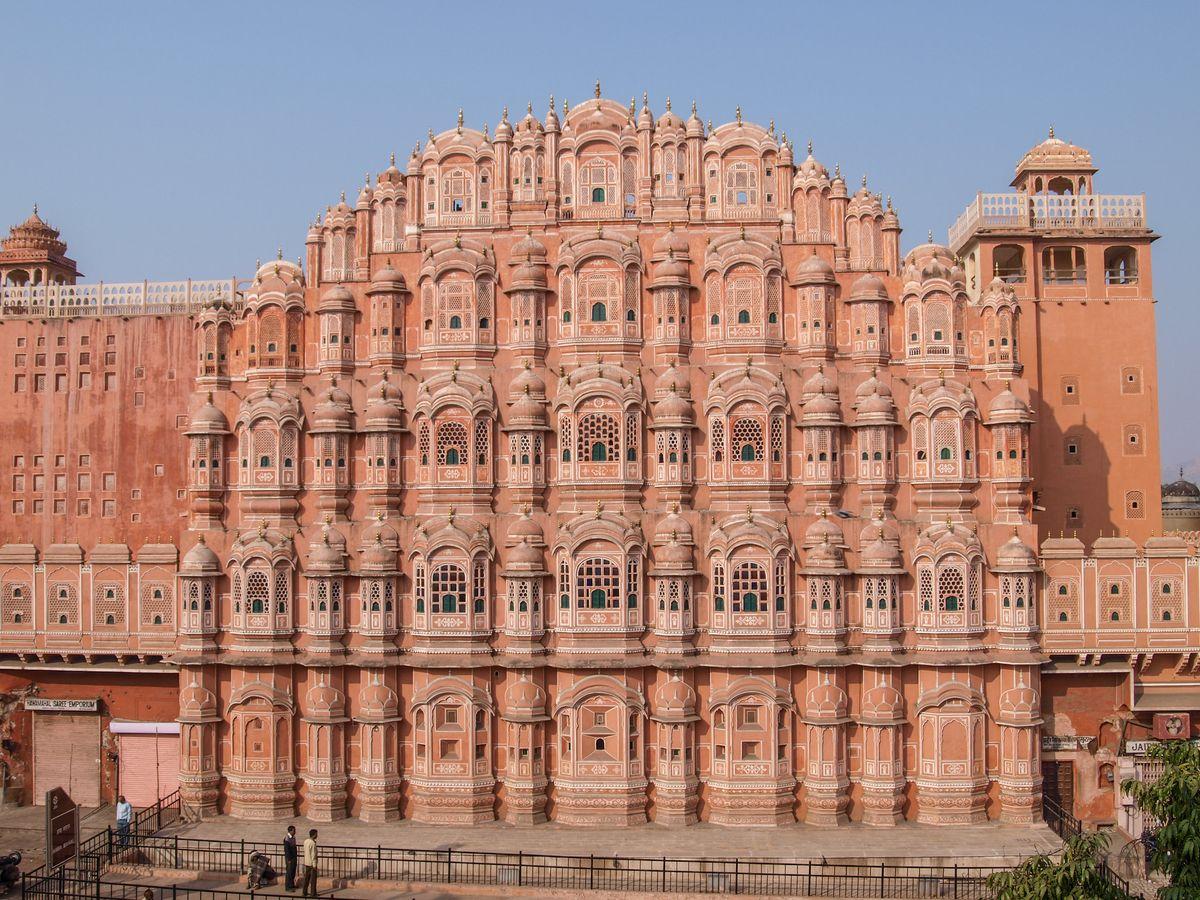
Europe
Palace of Versailles
France
The best known and possibly the most magnificent palace in the world with 700 rooms. Constructed starting from 1661 and served as a royal palace until 1789. This palace brought a new style to many areas of life – architecture, planning, arts, governance, and etiquette – thus the palace represents one of the most important monuments of culture in Europe.
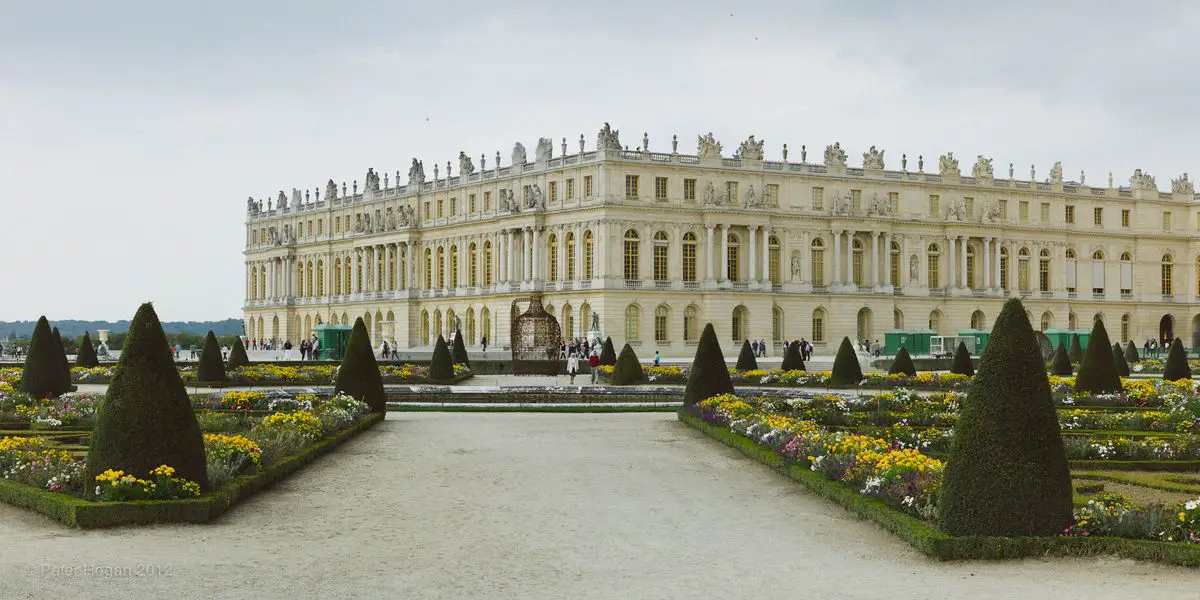
Alhambra
Spain
Huge palace and fortress with major cultural importance. The fortress was first constructed here in 889 AD, and the royal palace for the Sultan of Granada was built in 1333. A major achievement of Muslim architecture and art. Palace and its gardens were supposed to represent Paradise.
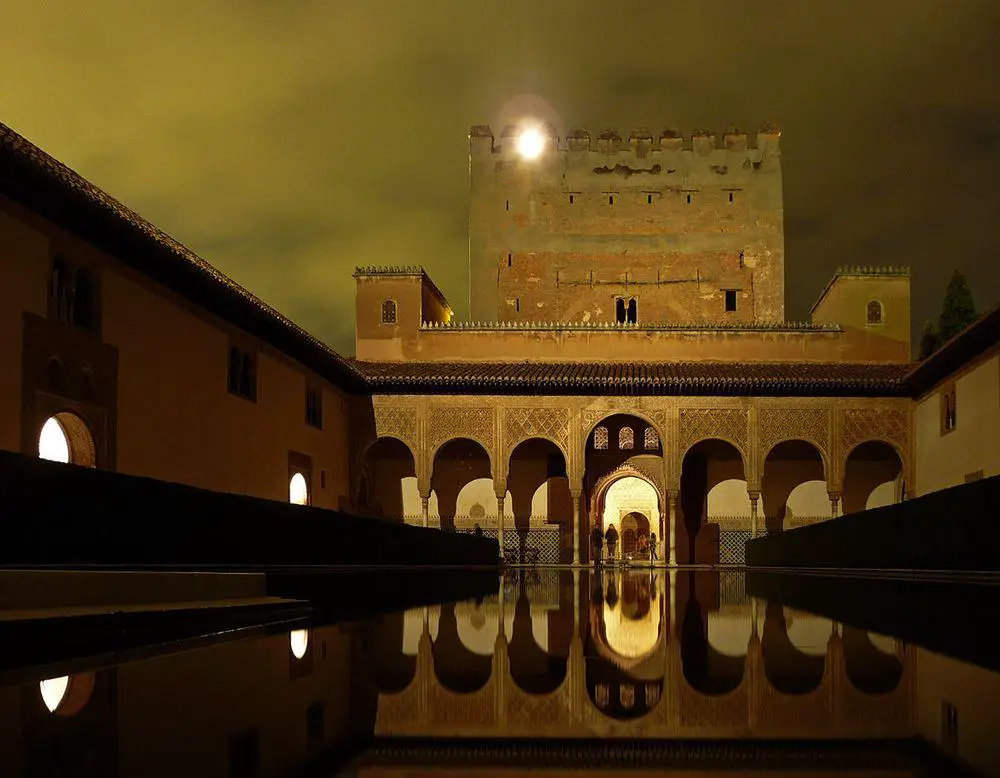
Château de Chambord
France
One of the most iconic Renaissance buildings in the world, melting in its design the French medieval architecture and Italian classical architecture. Constructed in 1519 – 1547. This castle still has fortifications, including a keep and a moat, but it primarily functions as a luxuriant residence. Palace has 440 rooms.
Peterhof Palace and park
Russia
One of the world’s most spectacular palace and garden complexes. Palace was designed by Bartolomeo Rastrelli in the Baroque style and constructed in 1714-1755. Spectacular are the numerous fountains with gilded sculptures that are powered by groundwater pressure. This is a so-called "travel palace", where high society travelers could rest after their trip and before entering St Petersburg.
Hampton Court Palace
United Kingdom
A royal palace, one of the most impressive palaces in the United Kingdom. Started in the late Gothic-Renaissance style in the early 16th century and continued in the Baroque style in the 17th century. This site of numerous important historical events contains a huge amount of valuable artwork, it is also a site of legends.
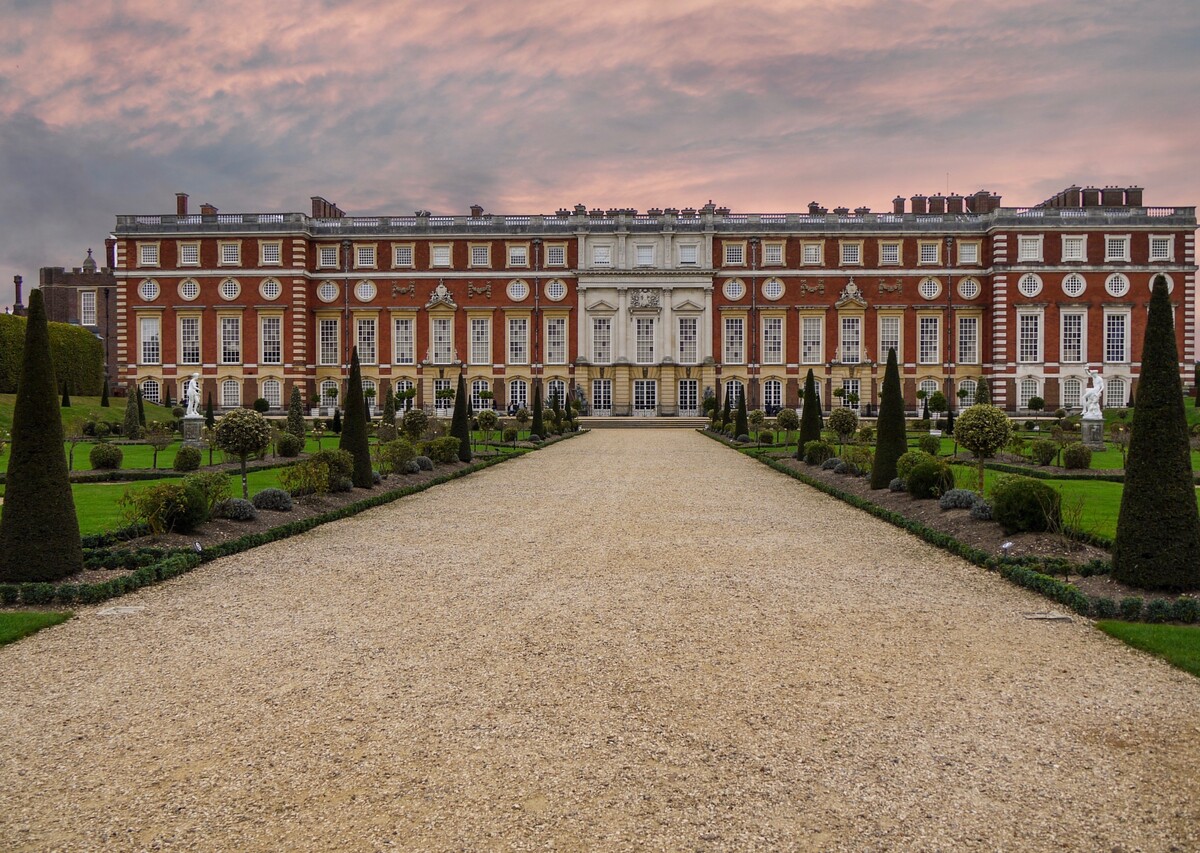
Winter Palace
Russia
The official residence of Russian monarchs, designed by Bartolomeo Rastrelli in Rococo style and constructed in 1732-1837. Reportedly contains 1,500 rooms, and many of the rooms are very ornate. Now contains the Hermitage Museum – one of the richest and largest art museums in the world, with numerous artworks of world importance.
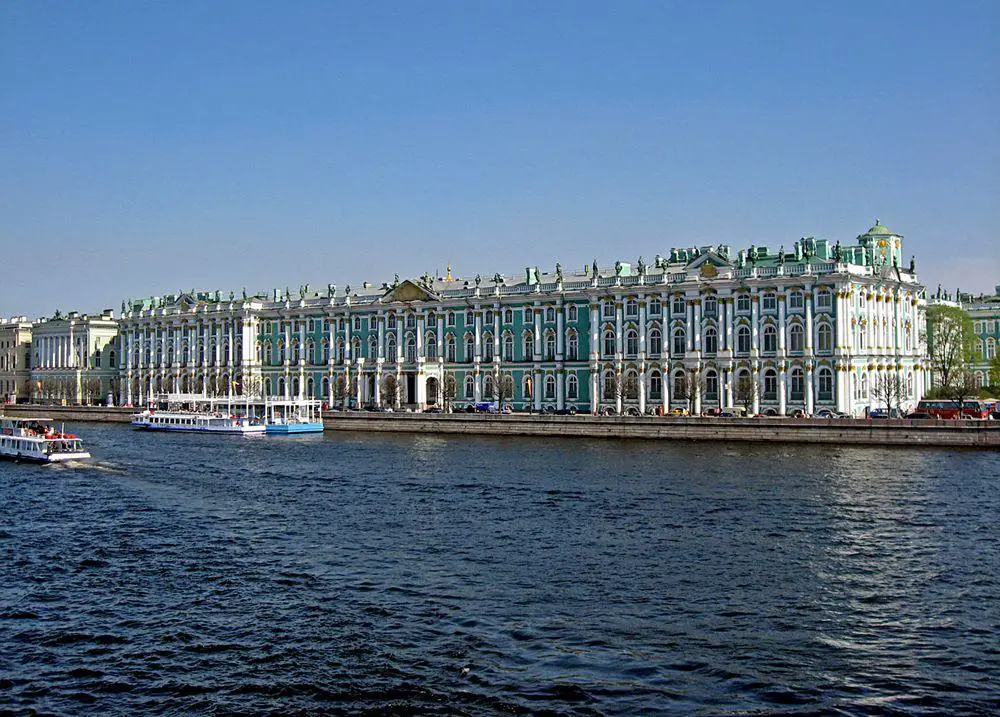
Doge’s Palace
Italy
Main power seat of a once-powerful state, an unusual building that was constructed in 1309-1424.
Catherine Palace and park
Russia
This magnificent palace was designed by Bartolomeo Rastrelli in Rococo style and constructed in 1717-1756. The facade of the palace is 325 m long. One of the legendary interiors of the palace was Amber Room which was pillaged by Germans during World War II and has not been found since.
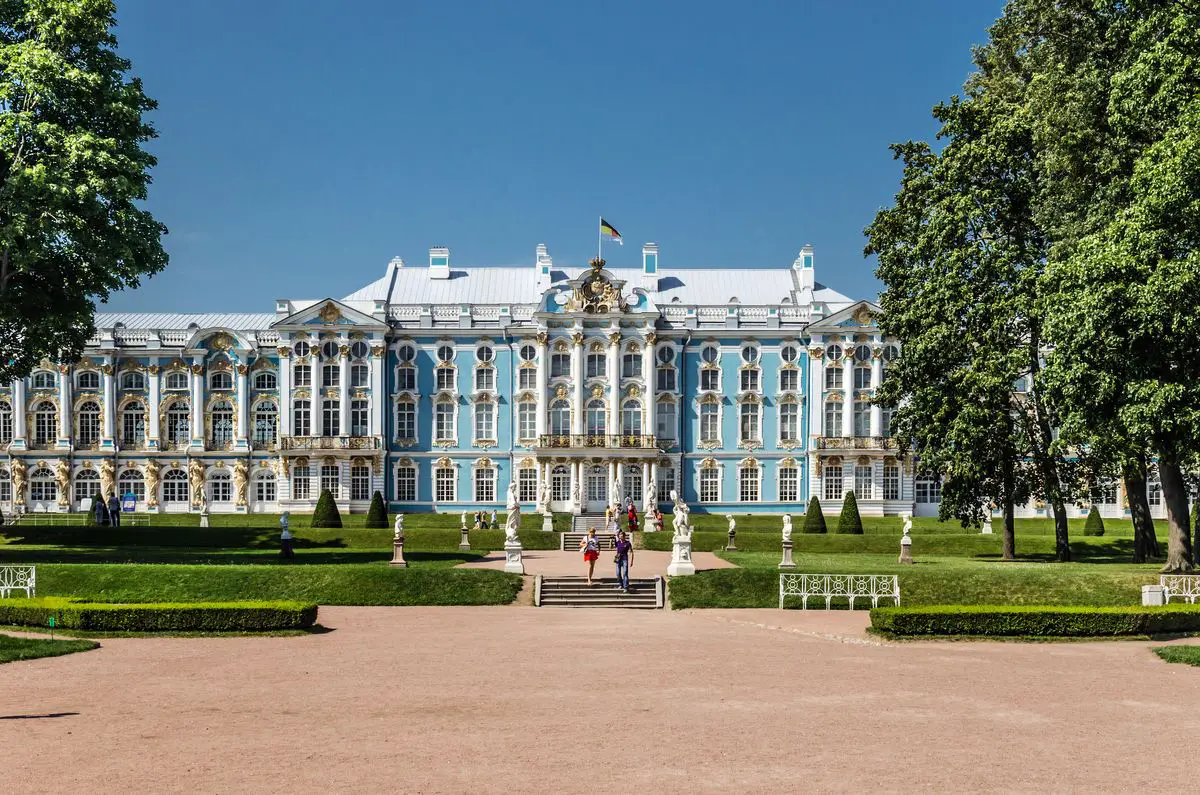
Neuschwanstein Castle
Germany
One of the world’s most recognized “castles” – but in reality, this is not a true fortified castle but a Neo-Romanesque palace. Constructed on a hilltop at the base of the Alps in 1869 – 1892 (unfinished). Very ornate interiors.

Castle Howard
United Kingdom
One of the most magnificent palace-like structures in Britain. This stately home has been constructed mainly in 1699 – 1712 in the Baroque style, designed by John Vanbrugh. 145 rooms, including the Great Hall which is 24 m high.
Blenheim Palace
United Kingdom
Enormous country house, the only non-royal and non-episcopal country house in England that is named a palace. Constructed in 1705 – 1724 in splendid English Baroque style and contains many valuable artworks. Home of the Churchill family for several centuries, now the property of Dukes of Marlborough.
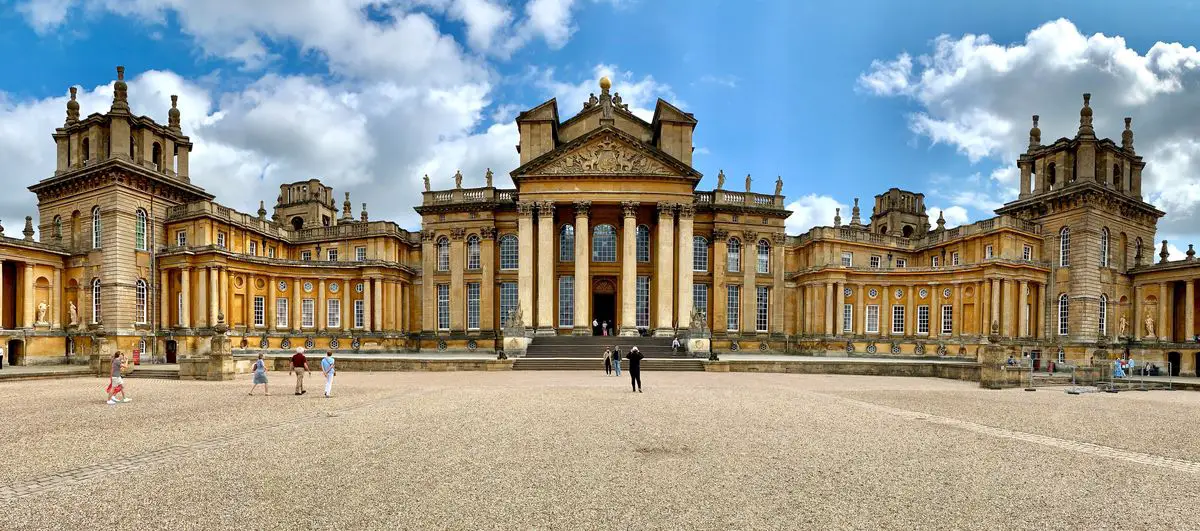
Schönbrunn Palace
Austria
One of the most prominent palaces in the world, built as an imperial summer residence of the Habsburg dynasty. The current giant palace with its 1,441 rooms was built in the 1740-50ies. It was built in the Baroque style, with very ornate interiors in many rooms. The facade was remodeled in a Neo-Classicism style later, in the early 19th century. Very impressive are also Schönbrunn Palace Gardens – an area with sculpted reliefs, many examples of park architecture (including the enormous Gloriette), orangery, and palm houses.
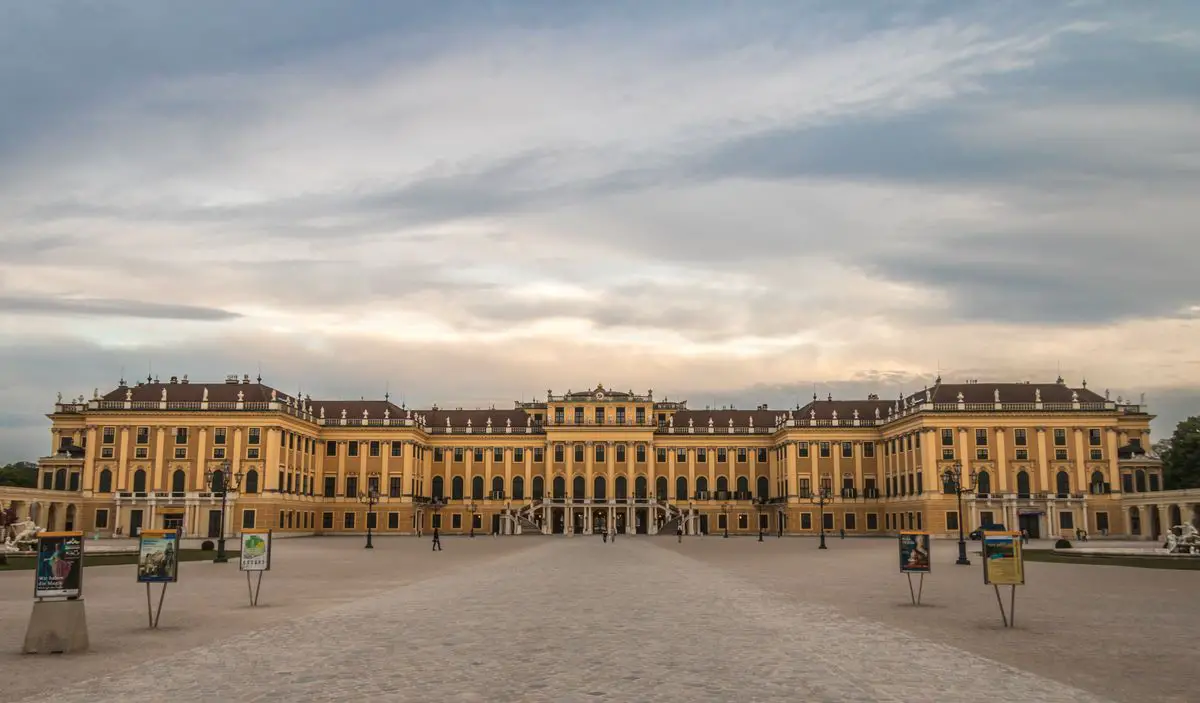
Burghley House
United Kingdom
Impressive country house, built in Elizabethan style (English Renaissance) in 1587. 35 large rooms and more than 80 smaller rooms. Valuable, intricate frescoes.
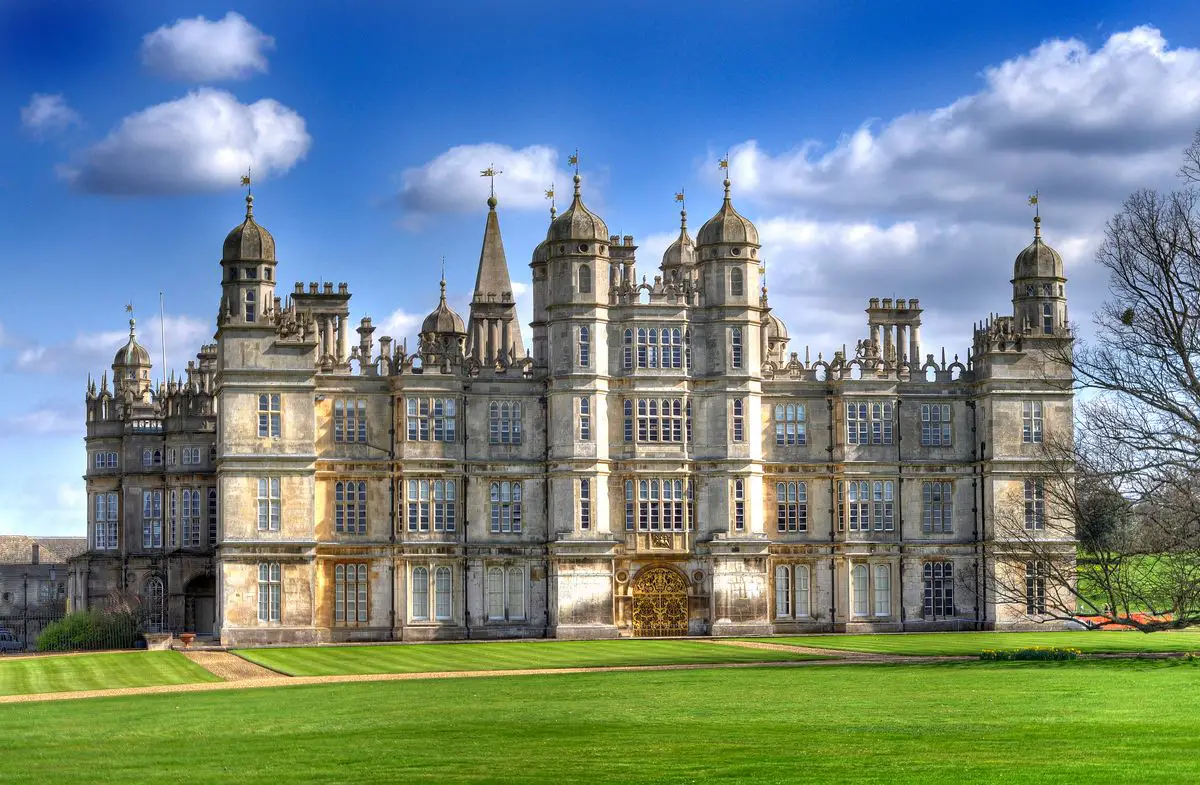
Nymphenburg Palace
Germany
Enormous Baroque palace, the summer residence of the rulers of Bavaria. Constructed in 1664 – 1675 (central part) and the 18th century. The facade of the palace is some 700 m wide, and many rooms have ornate interiors.
Dolmabahçe Palace
Turkey
The administrative center of the Ottoman empire from 1856 to 1922. Large palace in Eclectic style, constructed in 1843 – 1856. Adorned with 14 tons of gold, many rooms have opulent interiors. Contains the largest collection of crystal glass in the world.
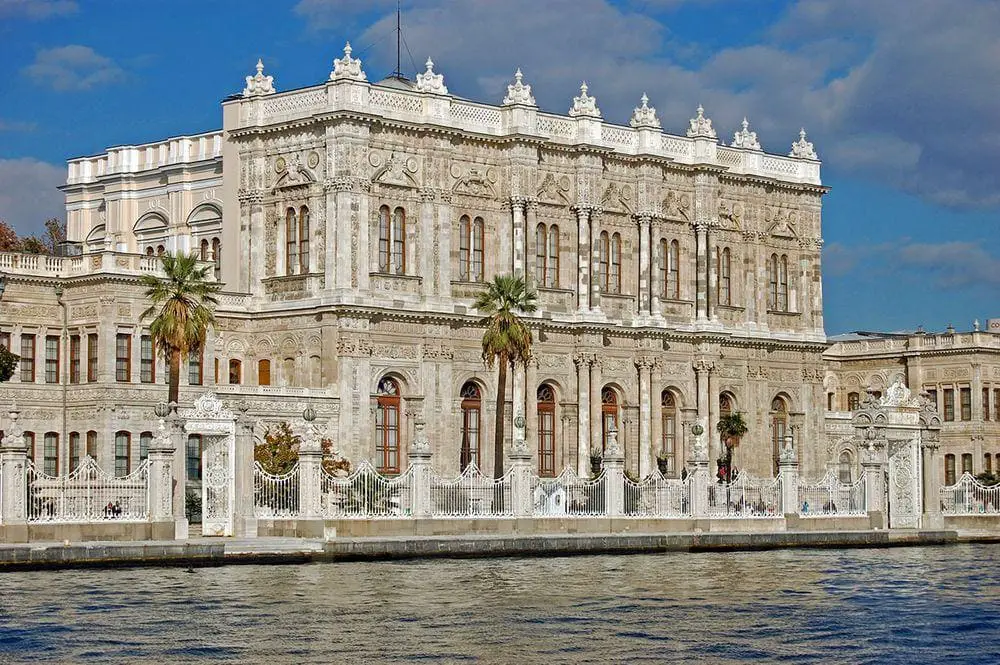
Hohenzollern Castle
Germany
An enormous and impressive hilltop castle. The current castle was constructed in 1846 – 1867 in Neo-Gothic style on the site of earlier castles – thus it is not a true castle, but not a classical palace either.
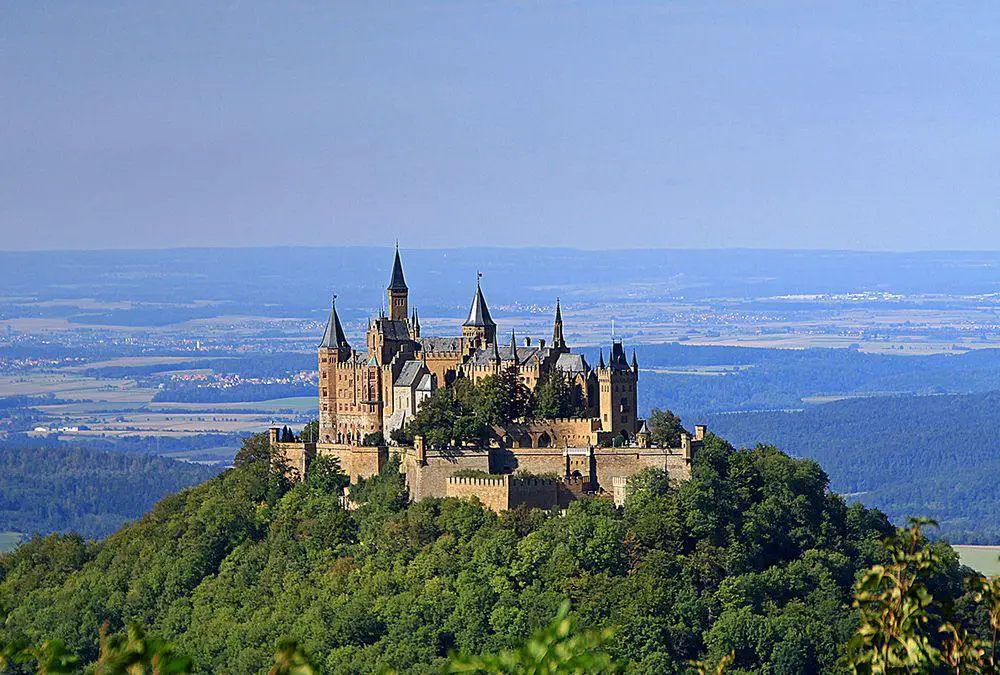
Belvedere
Austria
A complex of palace buildings in Vienna – Upper Belvedere Palace, Lower Belvedere Palace, Orangery, and the Palace Stables, surrounded by an exquisite park. One of the high achievements of the Baroque style in architecture. The beautiful Upper Belvedere was built in 1717 – 1723. The palace contains a collection of Gustav Klimt paintings and other influential artists.
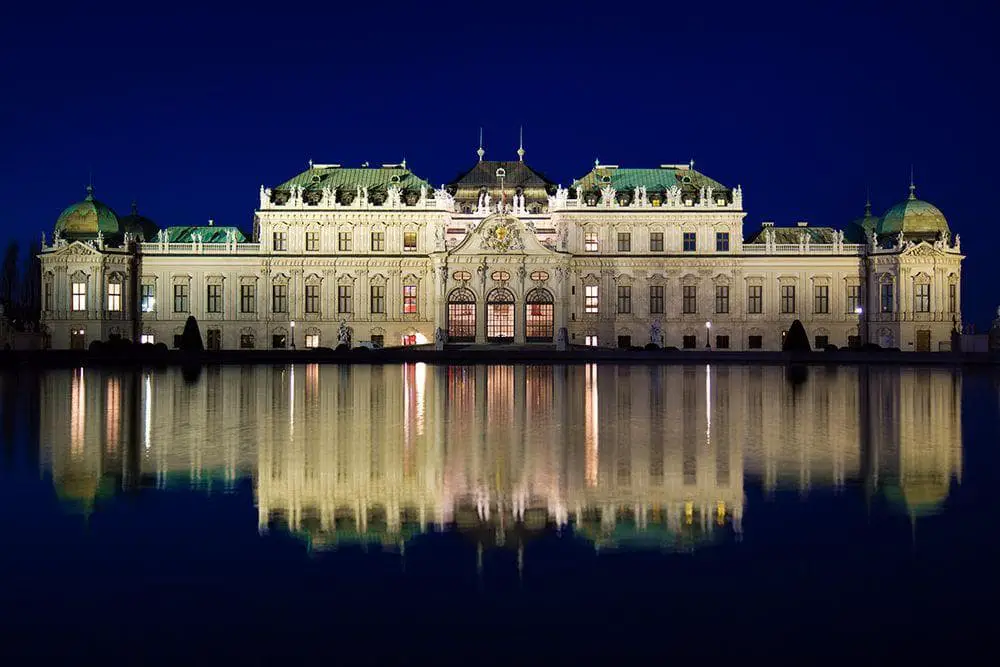
Alcazar of Seville
Spain
The oldest existing royal palace in Europe, built by Almohades as a Moorish fort. Most of the present structure was completed in 1364. The palace contains valuable interiors and artworks.
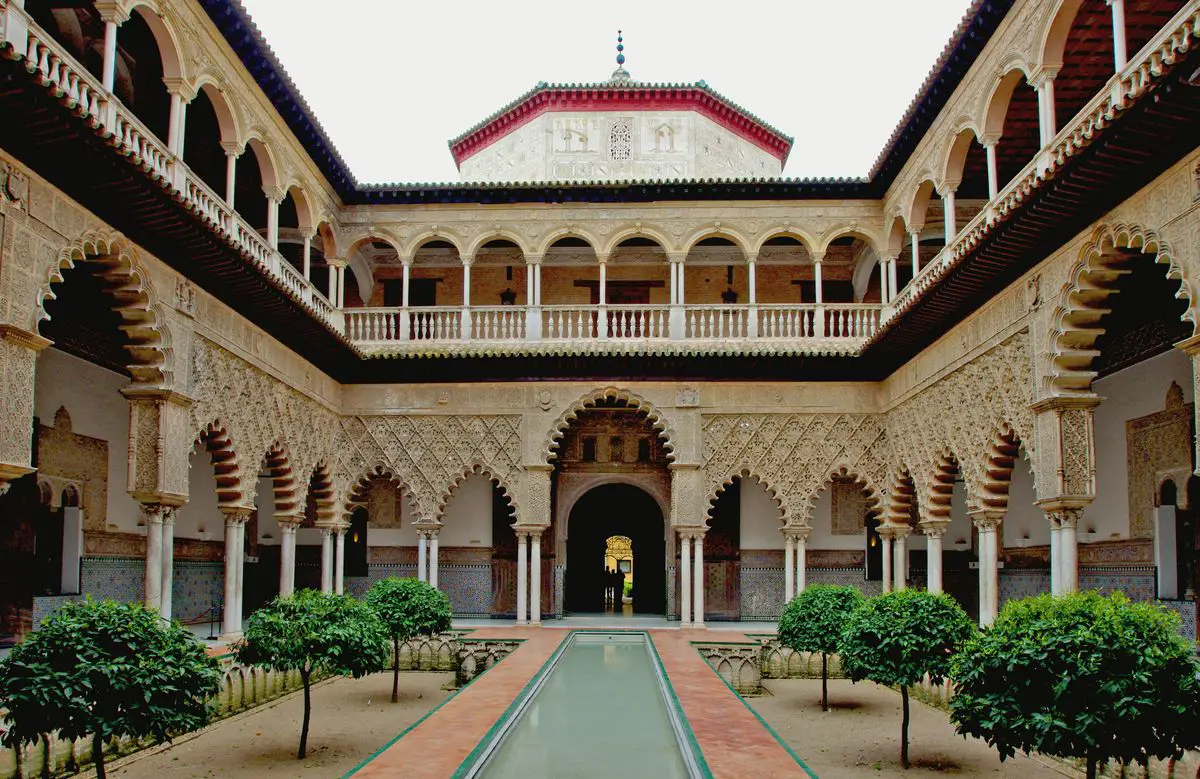
Sanssouci
Germany
This Rococo palace was constructed in 1745 – 1747 for the Prussian king Frederick the Great. The beautiful terraced gardens around the palace have numerous interesting samples of garden architecture, such as the ornate Chinese House.
 Recommended books
Recommended books
Abandoned Palaces
Built to impress, built with style and grandeur, built, above all, to last: it’s all the more remarkable when buildings such as these fall into disrepair and become ruins. From ancient Roman villas to the French colonial hill station in Cambodia that was one of the final refuges of the Khmer Rouge, Abandoned Palaces charts the decline of what were once the homes and holiday resorts of the super wealthy.
The Royal Palaces of Tudor England
After surveying the development of the royal residence buildings, Thurley (chief curator of the Historic Royal Palaces Agency, England) then focuses on the reign of Henry VIII, explaining how and when the king’s palaces were used and exploring common myths about the buildings and the kind of life that was led in them. He illuminates early Tudor etiquette, hygiene, religion, government, recreation, cooking, and interior decoration, concluding that this period saw major innovations in both the structure of the court and the form of royal residences.

